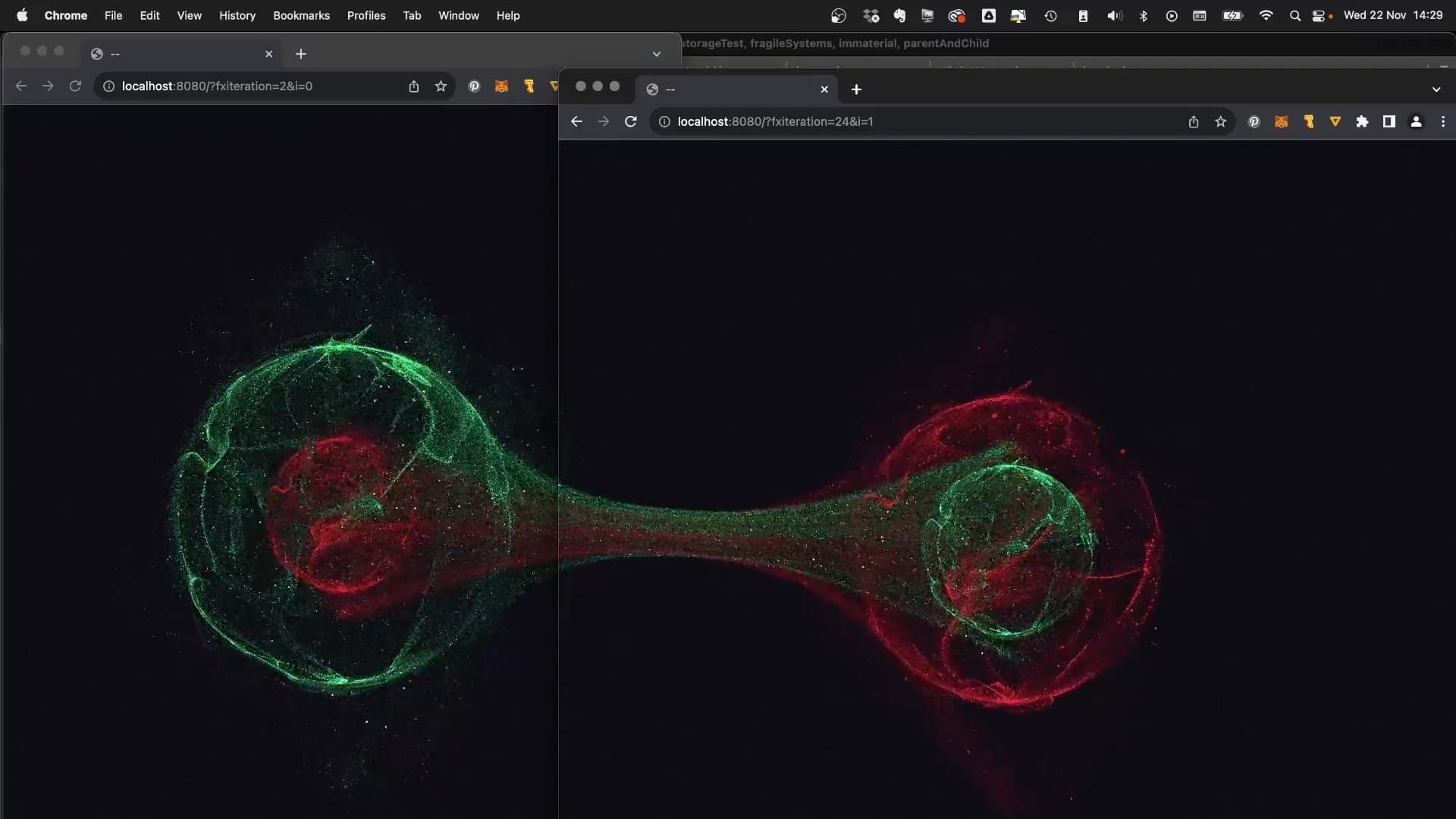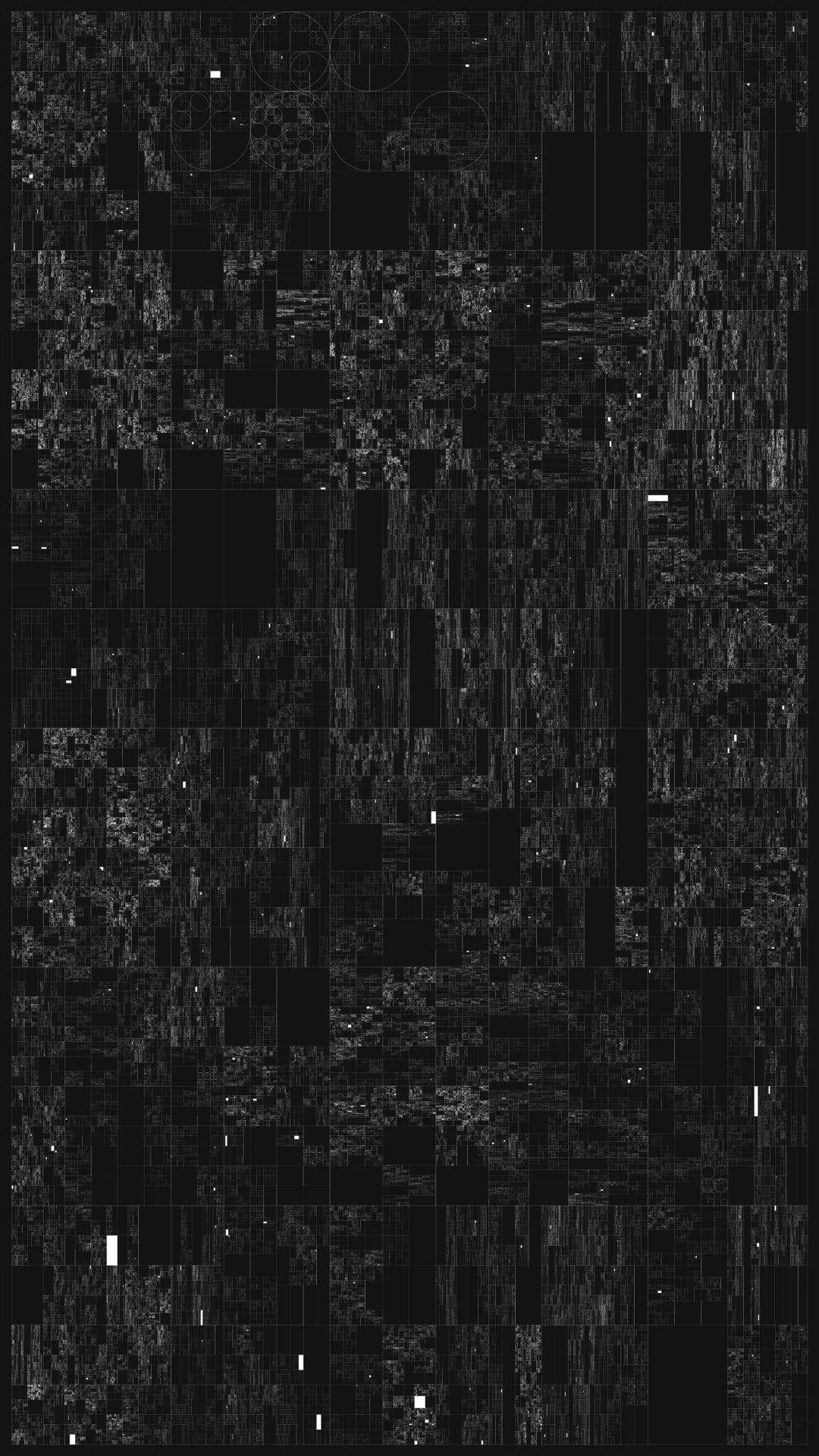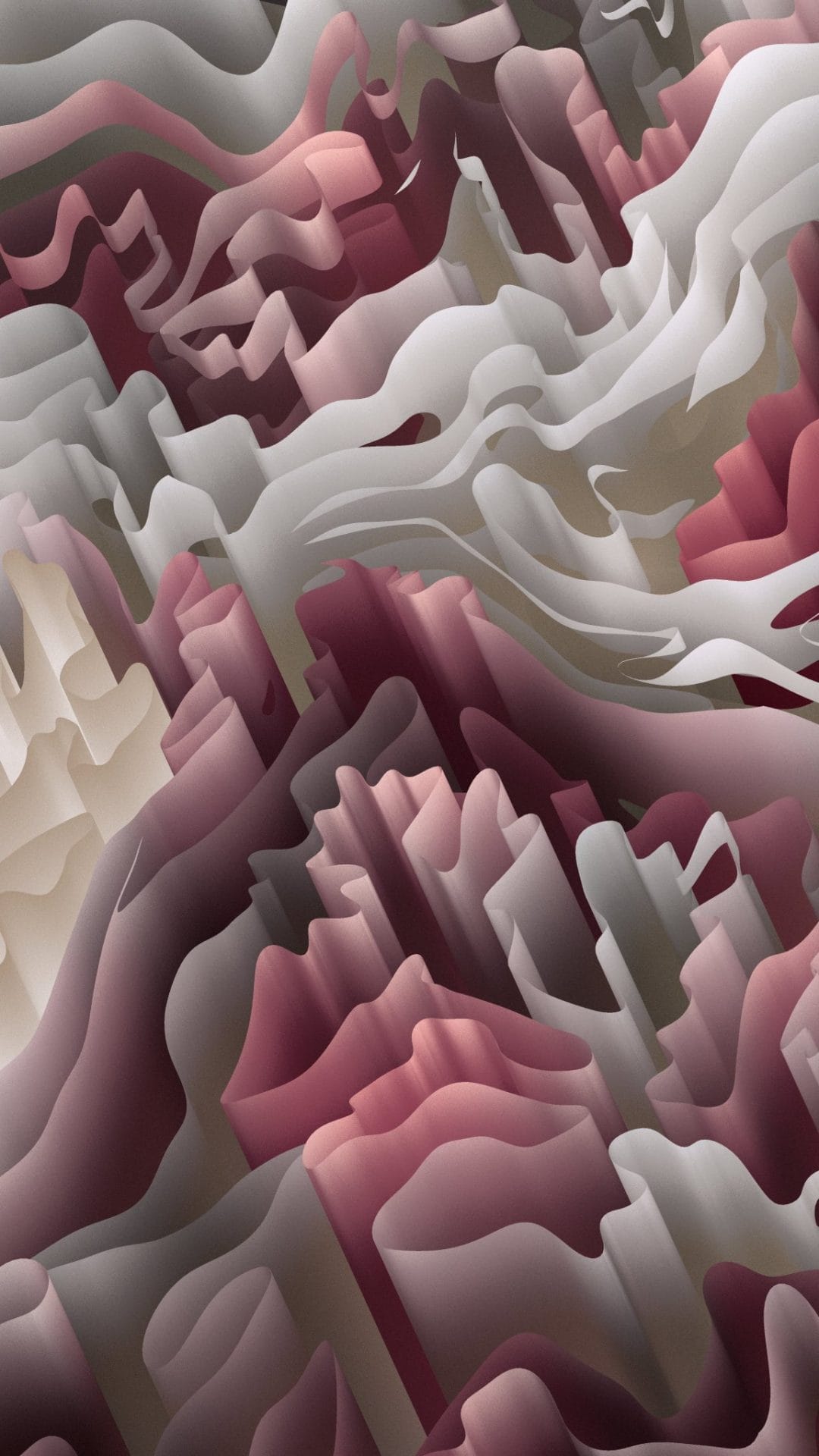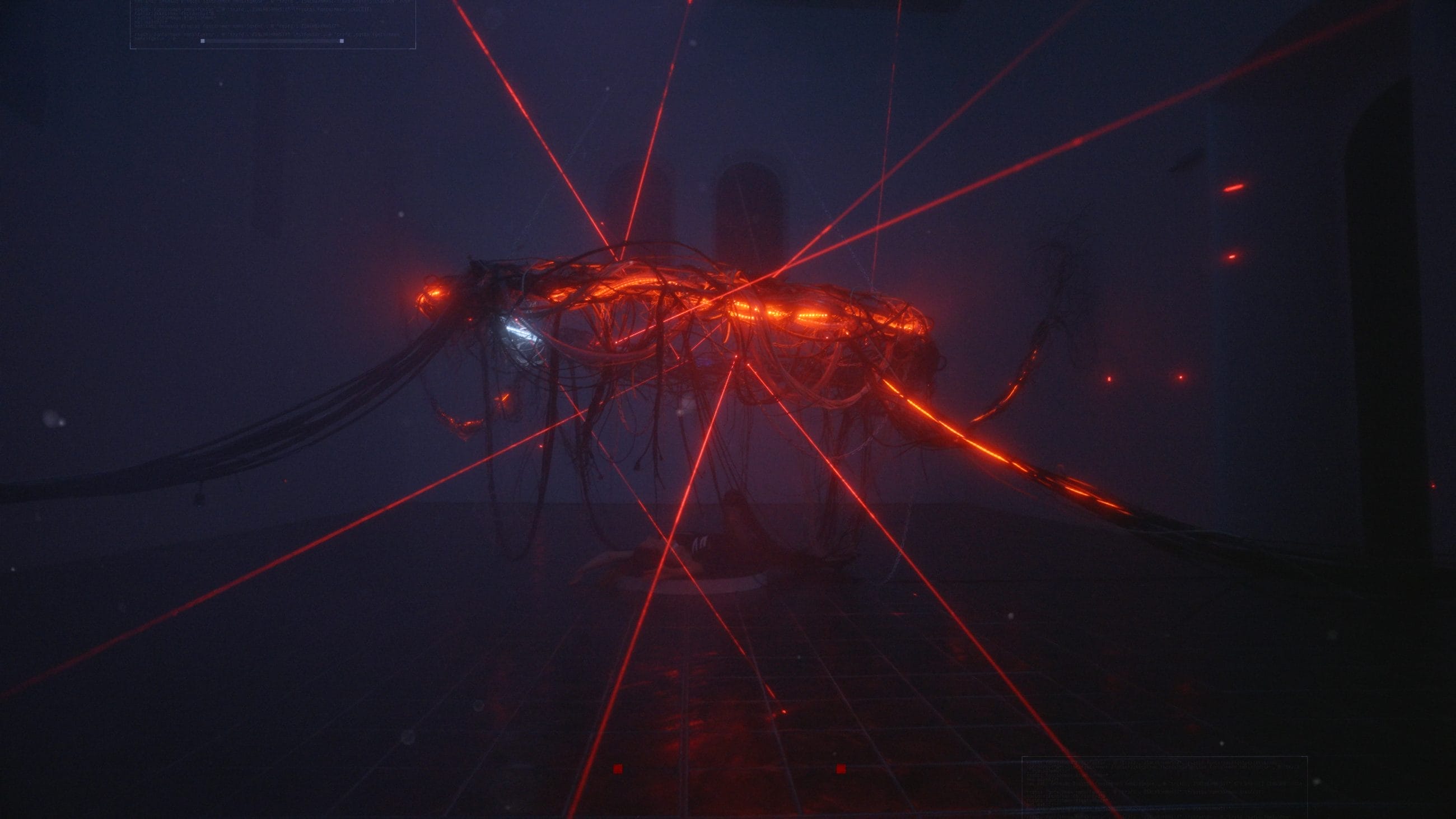
Bjørn Staal and the Art of Connecting Worlds Through the Browser
When it comes to digital art, Bjørn Staal embodies a profound understanding of the ties between art, technology, and the human experience — his work transcending the confines of mere visual appeal, settling into the complex dynamics of generative algorithms where simplicity and complexity coexist and converse.
Central to Staal’s most recent artistic exploration is ‘Entangled’, a recently revealed work-in-progress preview that has been receiving widespread attention for both its conceptual quality and its distinctive use of interactive and browser-based elements. This video-preview of this work soon gained traction across diverse platforms, captivating both the generative art community and wider audiences; a phenomenon of virality that signifies a significant shift in the digital art landscape, indicating an increasing public fascination with the deeper, more immersive and interactive experiences made possible by works like this.
Ultimately, Bjørn’s work challenges us to reconsider the essence of artistic expression in our time – how it’s conceived, experienced, and shared in a world where technology is not just a tool, but a canvas and a medium in its own right.
Digital art, and more specifically generative art, are in the midst of a multi-faceted dialogue encompassing accessibility, interaction, and democratization. It’s a conversation that Staal contributes to, not only through his creations but through his philosophy and practice.
This discourse extends to the role of open-source software in the creative process, a topic that has gained significant prominence. The balance between individual artistic vision and the collective ethos of the digital community presents a fascinating paradox that is central to contemporary discussions in the field. It’s within this space that Staal’s work resonates, offering a perspective that is both reflective and forward-thinking.

Bjørn Staal in Conversation with Fakewhale
In the following conversation with Fakewhale, Bjørn Staal discusses the nuances of his artistic process, the intersection of open-source and generative art, and his upcoming projects, ‘Immaterial’.
Fakewhale: Your art is a unique expression of complex dynamics between simplicity and complexity in generative algorithms. In what ways do you believe your coding style has evolved to mirror the intricacies of your art over the years?
Bjørn Staal: I think for me, the code that I write and the art that it produces are two sides of the same coin that have developed in tandem since I started programming as a teenager. I can’t really separate my impulse to learn new concepts and techniques from my eagerness to explore new visual and spatial landscapes. I’m a bit all over the place when it comes to how I write my code (even more so now that I work by myself), but in general, I’m on the lookout for simple(ish) base algorithms that have the potential of giving rise to complex, emergent behavior. Generally, I try to avoid writing too many if statements (if I can help it) and rather let the interplay of moving parts make the decisions for where the system ends up going.
Fakewhale: Recently, the sharing of the work-in-progress of “Entangled” went viral, not only resonating with the generative art community on Twitter but also gaining traction on platforms like LinkedIn. What was the inspiration behind this work, and what do you believe attracted such a diverse audience to this piece?
Bjørn Staal: Yeah, that took me a bit by surprise to be honest. I mean, I was excited to share this wip as I was happy with the direction it had taken but the response was a bit overwhelming. At the time of writing the video has more than 11million views, 800.000 likes and 6.000 comments on Instagram, a platform that I never paid much attention to. I’m not quite sure why it gained so much attention but I suspect it was a combination of several factors like the element of novelty, pretty graphics, the appeal to the tech crowd through the use of browser technology in unconventional ways + the algorithms exponential amplification of content with a certain velocity.
The concept for this series was conceived a couple of weeks ago when I started looking into the new capabilities of fxhash 2.0 as it was closing in on its December release date. Basically I started playing around with the idea of making a cross-chain project as I’ve always found the separation between the tez and eth-crowd to be a bit artificial. As I was writing down some loose ideas for a way to connect the two, the word “entangled” emerged as a working title. I did a fair bit of layman’s research on theoretical physics a while back and I keep circling back to the concept of quantum entanglement: The phenomenon that two or more particles in a quantum state can get entangled in a way that makes them “linked together” no matter the distance between them. This seemed like a fruitful direction to explore further so I decided to build a prototype to see if I could get something interesting going.
From there I did some research on the possibility of communicating between two separate instances of one web-application without an intermediary. Since the goal is for two on-chain NFTs to interact with each other it can’t depend on any off-chain resources like a web-socket server o.s (which is typically used for realtime communication between instances). After some fiddling around I found a “hack” where two or more instances on the same origin can communicate via LocalStorage. From there on it was a matter of developing some visuals that could make the concept come alive. What you see in the demo I posted on Twitter is basically my first attempt at creating a system where two individual “particle clouds” start interacting across browser instances. Over the next month or so the plan is to further develop this into a fully fletched, dual-chain series.

Fakewhale: “Entangled” showcases a captivating interactive element, particularly in its browser-based manifestation. Could you discuss the role interactivity plays in your work?
Bjørn Staal: Interactivity has been a central theme in the work that I’ve done over the past 10-15 years, especially through the installation work I did at Void. Funnily enough, it has maybe become less of a focus for me in the last couple of years though. I recently read an interview with Andreas Gysin where he mentions his transition from being totally enamoured with interactivity to gradually favouring non-interactive pieces again. Generally, I feel similar these days. I’ve discovered a new fascination for creating dynamic systems that live a life of their own. Something that gives rise to hypnotic states of absorption without requiring any sort of direct involvement from its audience.
That being said, when a concept really begs for it (like in the entangled series) I’m all for incorporating interactive elements as long as it makes sense in the context of what I’m trying to achieve. When possible, I try to find unconventional ways of facilitating this interaction. I’ve always been fascinated with how you can “wake people up” by making a system respond to their actions in unexpected ways.
Fakewhale: Following the viral success of “Entangled,” you faced an influx of requests, some quite blunt, to open source your code. Your response was the auction of “bro here are the codes“, directing proceeds to Three.js in support of the open-source community. Could you elaborate on the deeper motivations for this response and its significance in the discourse around creative ownership versus communal sharing in the realm of generative art?
Bjørn Staal: Like I mentioned in my first (more serious) reply to these requests, I’m a huge fan of open-source culture. In my own personal view, anything you create that can be of real value to other developers and artists should be shared (if possible). That being said, there’s a fine line between sharing useful resources and dumping your unedited code online. That’s why I spent some time cleaning up the parts of my project that most people seemed interested in and posted it on GitHub. I think that there’s a certain responsibility that comes with publishing open-source code (that I detailed in the thread mentioned above) and at the current moment I have limited time and resources to invest in maintaining open-source libraries.
The requests that prompted my more humorous response seemed to be motivated by something less charitable than the honest pursuit of knowledge (I got hundreds of them on Instagram). Usually, when people aren’t happy getting access to a simplified example, or a generalized library, I suspect they just want to use the code with little to no modification. That’s how I got the idea of printing it on paper and offering it to whoever was willing to pay for it. If anyone out there wants to manually type it up (or is clever enough to use some sort of computer vision system to scan it) be my guest. If we can donate a little bit of money to the real champions of open source that’s an added bonus.

Fakewhale: You recently shared your thoughts on the interplay between open-source software and your work. How do you see your role within that ecosystem, and how do you think generative artists can contribute to and draw from open-source culture?
Bjørn Staal: The case of generative art and open-source software is an interesting one. A couple of years back, before the inflow of money into the space, it seemed less conflicted from my point of view. People would gladly share a bunch of code on web archives like open processing o.s. with no other incentive than to help and gain the respect of fellow creative coders. When some artists started making serious money on generative art a couple of years ago we saw some pretty nasty examples of people who blatantly copied old code from these archives with very few modifications and minted it to make a quick buck. With more and more generative artists making an actual living off their art these days I can see why many become more protective.
Personally, I’d like to open up as much as my time and resources allow, as long as I can adhere to the principles I outlined earlier. I think everyone should be aware of to what degree we are relying on open-source tools and try to give back when possible. The right way to do it imho, is through sharing code that is generalizable and useful to others, while sharing concepts, ideas, and techniques when that seems more appropriate. The point is to give people the tools to develop their own work, rather than to hand them a “be-like-me-starter-pack”. When it comes to the elements that constitute the core of an artist’s personal style or signature I’d leave it up to each individual artist to figure out where to draw the line.
Fakewhale: You also highlighted several artists and programmers in the generative art and creative coding community whom you admire. Could you share who they are, and how these individuals have shaped your approach to art and programming?
Bjørn Staal: In the thread, I mentioned a few people off the top of my head that I know play an active role in building tools and sharing resources that is valuable to the generative art community right now, but the list is far from exhaustive. I didn’t even mention one of my personal heroes, Karsten Schmidt (Toxi), as he has left the Twitter sphere in favour of a less proprietary platform. Very few people have been as active as Karsten throughout the years writing high-quality, modular code and documentation as well as running workshops, giving talks and sharing his ideas on Twitter. I’m really sad that he has left the platform but I respect his decision to stay true to his ideals.
Other notable people that have influenced my work directly is Marcin Ignac (whom I’ve had the pleasure of working with on several occasions), Robert Hodgin (through his work on Cinder back in the days), mrdoob (the creator and maintainer of threejs), the whole openFrameworks community (especially Arturo Castro), Daniel Shiffman (who wrote the wonderful book The Nature of Code) and the late JT Nimoy (who did some of the most mind-blowing generative graphics the world had seen at that point).

Fakewhale: Care, maintainability, and documentation are critical to open-source code, and you’ve suggested these are values you uphold in your own work. How do these principles influence your artistic process and the structure of the code behind your art?
Bjørn Staal: I wish I could tell you that these principles play a substantial role in my art-making process, but the honest truth is that most of the time the opposite is the case. When I’m working on my own art I generally favor development speed and the ability to iterate quickly over writing clean, decoupled code. That’s also why it doesn’t make sense to share much of my project-specific source as it is too tied in with that specific use case. Over time I’m hoping that as I reuse and reiterate recurring concepts and techniques a more modular approach will become apparent. Honestly, I’m pretty new to writing modern Javascript (C++ was my poison for the last 8-9 years) and I’m still picking up new design patterns and ways of organizing code on a daily basis. Designing a framework/library from scratch right now would not make much sense as I’d probably have to rewrite it six months down the line. At the time being I’m focused on developing my artistic direction and I don’t wanna get bogged down by premature organization/optimization of code.
Fakewhale: Deciding which elements of your work to share is a thoughtful process. What guides your decisions on this, and what are your feelings when you see others expand upon the concepts you’ve shared?
Bjørn Staal: I think I have elaborated on this already but to sum it up: I try to share code when I think it can be of value to others in a range of different contexts. I’m not too protective of my own stuff, I’m mostly just limited by the time and resources I have to spend on doing a proper job preparing my code for public use. When something feels like it is very specific to a particular project or my personal expression I think it’s fine to keep that to myself.
I think it’s amazing to see others rehashing concepts that I developed as long as I feel they bring something new to the table. I mean, in the case of someone just starting out I think it’s fine to try to copy something for the learning experience but I’d like to encourage people to keep reaching outside of the bounds of what they have right in front of them. If you end up creating something more interesting than what I did, more power to ya!

Fakewhale: Based on your recent experiences, what guidance might you offer to other code-based artists about managing the pressure to open source their creations?
Bjørn Staal: I’m not sure I’m the right person to give proper guidance on the subject, but one thing I learned is that you should try to avoid overextending yourself to please people who can’t even be bothered to do a simple Google search, or write you in a polite manner. If you feel that you have written some code that you find useful in a lot of different contexts you might wanna consider open sourcing it. A valuable ROI when publishing code is often that other people will discover issues and propose solutions you wouldn’t have considered yourself, effectively improving your code base for free. When done properly, open-source software is a non-zero-sum game where everyone benefits.
Fakewhale: As we look forward to the January 3rd, 2024 release of ‘Immaterial’ on Art Blocks, could you provide some insights into the conceptual genesis of this project and how it embodies your current artistic direction in generative art?
Bjørn Staal: The project started out as an exploration of a set of algorithms mimicking organic phenomena such as recursion, growth, fluidity and fractal noise. Through the repurposing of a GPU-accelerated particle system that I built a while ago, I was able to implement a system that lets me explore these algorithms in real time. To me, this aspect constitutes an important part of my workflow as it gives me a better intuition for how the system evolves over time.
Originally influenced by the underlying structure of fungi gills, the series explores a range of formations and speculative life forms, referencing possible futures where digital and organic systems merge. I’ve really tried to push myself in the use of colors in this series. Endlessly studying the complex perturbations of shades and hues that emerge as sunlight interacts with organic material. Through an interplay of Isometric 3D- and 2D aesthetics I’ve tried to leave a certain amount of visual ambiguity for people to get lost in, never being quite certain what you are looking at, in an associative Rorschach test of sorts.
I quite enjoy exploring this duality of the abstract and the recognizable. It can work almost like visual koans that throw you off enough to leave space for pure, meditative wonder. I can’t say if this is an embodiment of a distinct artistic direction for me yet, as I feel pulled to a lot of different things these days. I have a special love for time/motion-based generative work, but I also want to experiment more with printmaking and physical installations. For the time being I’m trying to explore a wide range of possible techniques and approaches to get a feel for what truly resonates. The biggest reason for quitting my studio to go solo earlier this year was to leave more space for research and open-ended experiments.
fakewhale
Founded in 2021, Fakewhale advocates the digital art market's evolution. Viewing NFT technology as a container for art, and leveraging the expansive scope of digital culture, Fakewhale strives to shape a new ecosystem in which art and technology become the starting point, rather than the final destination.
You may also like
Eli Scheinman in Conversation with Fakewhale
Introducing Eli Scheinman Director of Art at Proof and Yuga Labs Visit Profile In conversation with
ATEM by AUSGANG studio at Galerie Kaple
“ATEM” by AUSGANG studio, curated by Leszek Wojaczek, at Galerie Kaple, 06.09 – 03
Nick Walter, Tara Cunningham, Auswahl 24 at Aargauer Kunsthaus, Aarau
Auswahl 24 by Nick Walter and Tara Cunningham, curated by Sarah Mühlebach, at Aargauer Kunsthaus, A




